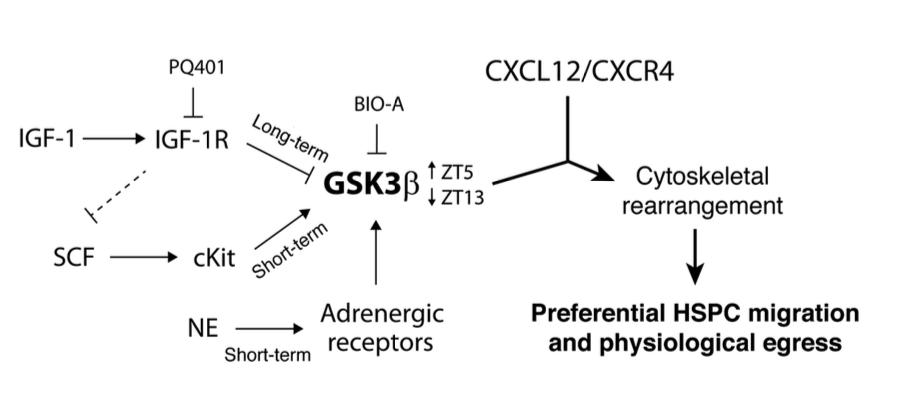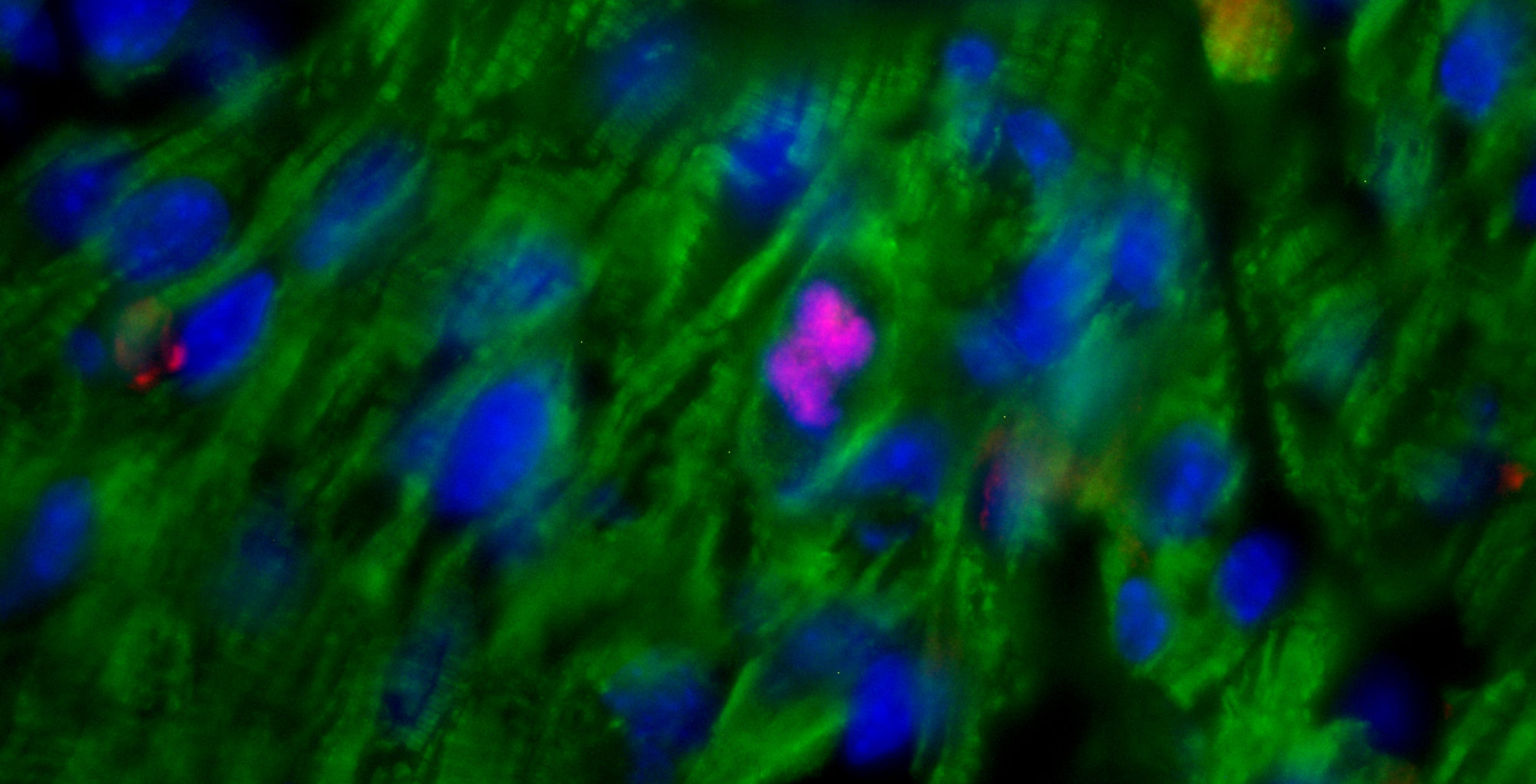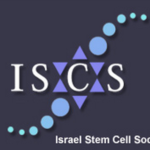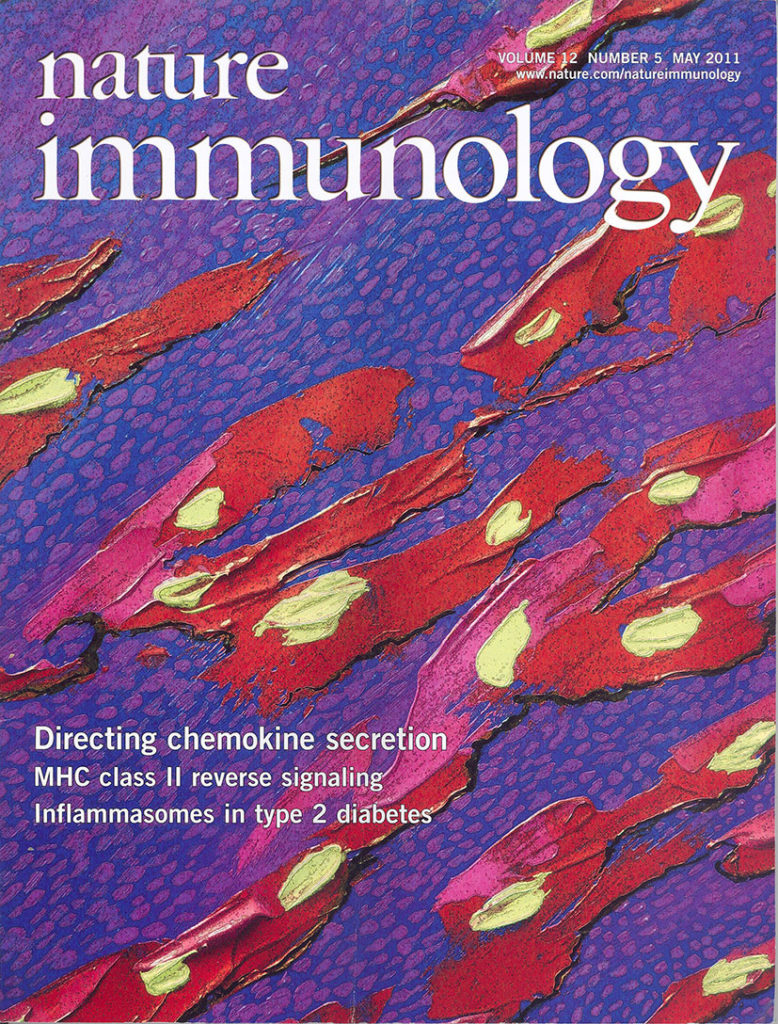Regulation of hematopoietic stem and progenitor cell (HSPC) steady-state egress from the bone marrow (BM) to the circulation is poorly understood. While glycogen synthase kinase-3β (GSK3β) is known to participate in HSPC proliferation, we revealed an unexpected role in the preferential regulation of CXCL12-induced migration and steady-state egress of murine HSPCs, including long-term repopulating HSCs, over mature leukocytes. HSPC egress, regulated by circadian rhythms of CXCL12 and CXCR4 levels, correlated with dynamic expression of GSK3β in the BM. Nevertheless, GSK3β signaling was CXCL12/CXCR4 independent, suggesting that synchronization of both pathways is required for HSPC motility. Chemotaxis of HSPCs expressing higher levels of GSK3β compared with mature cells was selectively enhanced by stem cell factor-induced activation of GSK3β. Moreover, HSPC motility was regulated by norepinephrine and insulin-like growth factor-1 (IGF-1), which increased or reduced, respectively, GSK3β expression in BM HSPCs and their subsequent egress. Mechanistically, GSK3β signaling promoted preferential HSPC migration by regulating actin rearrangement and microtubuli turnover, including CXCL12-induced actin polarization and polymerization. Our study identifies a previously unknown role for GSK3β in physiological HSPC motility, dictating an active, rather than a passive, nature for homeostatic egress from the BM reservoir to the blood circulation.

Vai all’articolo originale (in inglese): Kfir Lapid, Tomer Itkin, Gabriele D’Uva, Yossi Ovadya, Aya Ludin, Giulia Caglio, Alexander Kalinkovich, Karin Golan, Ziv Porat, Massimo Zollo, Tsvee Lapidot. GSK3β regulates physiological migration of stem/progenitor cells via cytoskeletal rearrangement. The Journal of clinical investigation, 2013

 Vincitori della poster session alla conferenza ISCS 2012 “The Young Investigators Stem Cell Meeting” con il progetto organizzato da Israel Stem Cell Society (2 Dicembre 2012. Tel Aviv, Israele).
Vincitori della poster session alla conferenza ISCS 2012 “The Young Investigators Stem Cell Meeting” con il progetto organizzato da Israel Stem Cell Society (2 Dicembre 2012. Tel Aviv, Israele).
 Abbiamo sviluppato Bitnos.com, un sistema operativo libero e basato sul web che permette di utilizzare le migliori applicazioni online, motori di ricerca e siti web gratuiti in campo biomedico. Con applicazioni e servizi on-line (noti anche come applicazioni web o webware), non è necessario scaricare e installare nulla. Tutti i servizi saranno direttamente disponibili per te in un solo click. Queste applicazioni e servizi funzionano indipendentemente dal sistema operativo che si sta utilizzando, in esecuzione tramite il browser come client. Hai solo bisogno di accedervi on-line.
Abbiamo sviluppato Bitnos.com, un sistema operativo libero e basato sul web che permette di utilizzare le migliori applicazioni online, motori di ricerca e siti web gratuiti in campo biomedico. Con applicazioni e servizi on-line (noti anche come applicazioni web o webware), non è necessario scaricare e installare nulla. Tutti i servizi saranno direttamente disponibili per te in un solo click. Queste applicazioni e servizi funzionano indipendentemente dal sistema operativo che si sta utilizzando, in esecuzione tramite il browser come client. Hai solo bisogno di accedervi on-line.